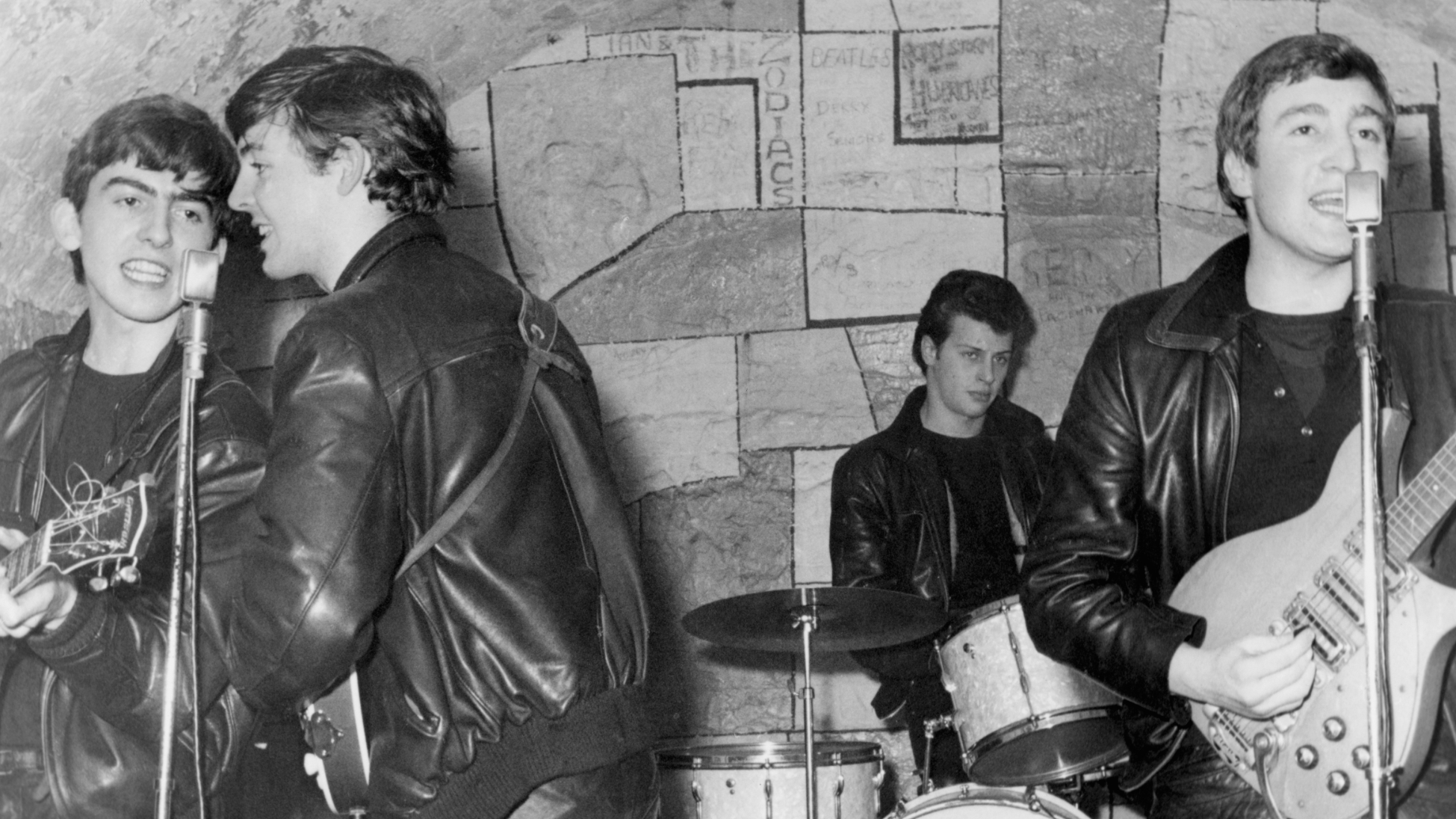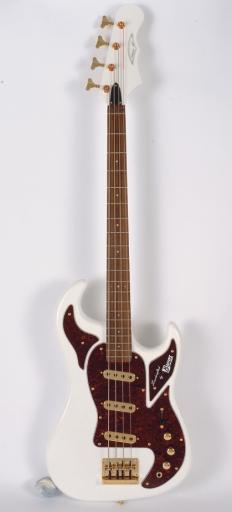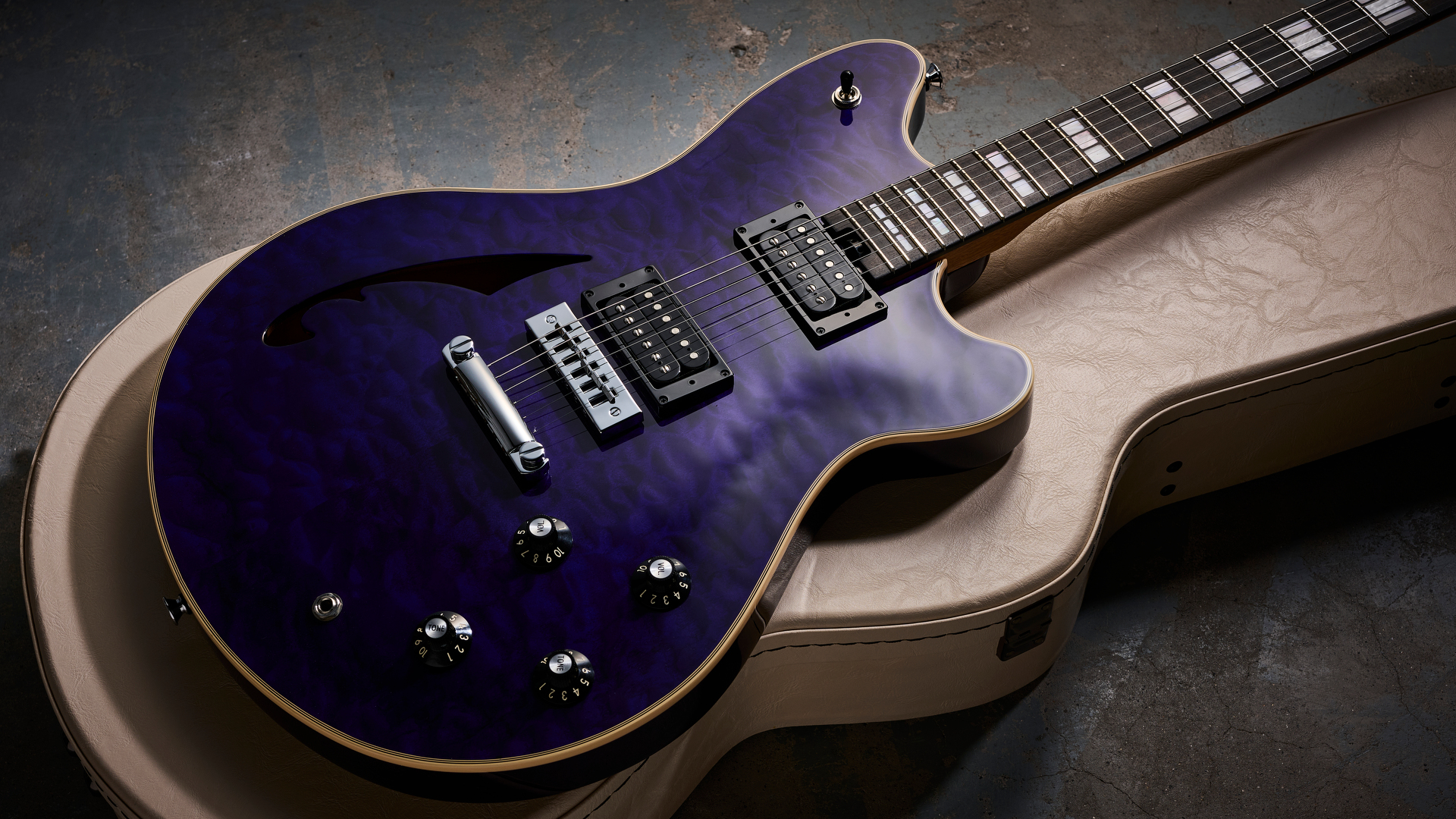MusicRadar Verdict
It's one of the best-equipped basses in the budget market, and ideal for anyone wanting a healthy variety of sounds at their fingertips.
Pros
- +
Packed with Burns features and that definitive sound imprint.
Cons
- -
Bottom-end delivery is just a tad short on warmth.
MusicRadar's got your back
This updated Marquee bass comes as a welcome sister to Burns' recent Batwing guitar (named after its headstock design).
The current guitar and bass ranges from the Burns design team have reached a new level as far as variety and consistency of build quality is concerned: and with a basic design that owes allegiance to Burns' own Jazz bass circa 1965, the attractively priced Marquee is destined to become yet another winner.
Making use of the classic batwing headstock shape, this bass is equipped with three pickups set at an angle.
This generous pickup count was a common feature with Burns basses of the sixties, and it's only right and proper that it's replicated here. Likewise, the 'tortoiseshell' scratchplate retains the characteristic three-section design.
The gold-plated hardware is a classy choice, and particularly fetching with this white/tortoiseshell combination.
Many players will obviously see it as the perfect partner to the Batwing guitar, but better still, perhaps, is that it serves equally well as an affordable substitute for the full-blown Shadows Bass, which remains outside the range of many a player's pocket.
The design
This body design, with the slightly reversed shape and two cutaways, has become something of a standard for the company and is used for several different models.
It's easy to appreciate why, as it works both visually and as a means to improve the overall balance of the instrument.
Body contouring offers a bit more playing comfort, while this brilliant Shadows white finish actually coats every surface except the rosewood fingerboard.
And while painted necks are not to everyone's taste, here the feel of the neck is peachy smooth and it's pleasingly tactile in use.
The distinctive headstock is fitted with slotted Burns tuners and the overall combination is easy on the eye, with an undeniable touch of class.
Surprisingly, the Marquee bass features a slightly shorter scale length than standard, but thanks to the well-balanced proportions of the design it doesn't appear that way.
There's no loss in feel or sound quality either, so anyone who prefers a smaller bass will love this. Typically, the weight seems substantial, but that helps in defining the sound.
The headstock tilts backwards too, so there's no need for string retainers and, true to the Burns fashion, the upper strap button is fixed behind the top body horn leaving that particular bodyline of the instrument pleasingly uncluttered.
The neck offers medium width combined with a deceptively slim depth, making it very easy on the left hand to navigate.
This is a very comfortable bass to play and, with that generous pickup complement, is equipped with a host of onboard sound-shaping opportunities.
Sounds
Where the Marquee Bass really excels against similarly priced competitors is the circuitry. The distinctive sound provided by these Tri-Sonic Bass pickups has lost none of its impact over the years.
Clean and crisp, with an inherent beefy nature, these are still ideal units for a contemporary bass. You'd naturally expect to get a good range of sounds from this trio, but it's thanks to the imaginative wiring and switching options provided that the full selection of tonal opportunities can be fully unleashed.
The five-way switch allows for the usual single pickup options and intermediate pairings, but the push/pull properties of the bridge pickup tone control are the trump card here.
Pulling this control upwards allows the neck and bridge pickups to work together, and this presents the player with a further range of stunningly hollow sounds.
Think throaty and gloriously deep, because the physical distance between the two pickups is that much greater than with pairings using the middle unit.
More interesting still is that whichever position your push/pull control is set, switching between the five positions of the lever switch serves to unleash even more tone parameters.
The sound options also benefit from having the second tone control, which not only provides some softer elements when using the bridge pickup alone but, when blending the two controls together, there's a further range of tonal manipulation.
If there is a downside at all, and at this price there's not much to find fault with, it does lack in the general meat- and-potatoes basic delivery associated with the likes of a P-bass.
Conversely the more edgy sounds, like those associated with a Rickenbacker, are much easier to achieve. Incidentally, while it's highly unlikely that anyone would choose a Burns bass to slap (it's a bit too retro looking and has a somewhat crowded body), it can produce some excellent percussive responses.
The sound, in fact, is every bit as solid as the build - and with such an individual and versatile voice, plus that unmistakable Burns sound imprint, this bass will appeal too many.
Feel
Like all Burns instruments, there's a definite individual feel about this bass, and that's becoming a rare quality these days.
It's a reassuring feeling, one that suggests a solid build with a substantial body mass. The playing action is smooth and positive, and the three pickups present you with several places to rest your thumb when plucking with your fingers.
And should you need to alter the set-up in any way, the solid bridge offers ample adjustments.
That distinctive segmented scratchplate is still one of the best-loved features of any Burns guitar: nothing short of revolutionary at its inception, and every bit as striking today.
When first introduced there was a tendency for the individual elements to shrink or buckle, but this has been solved and is no longer a problem.
The Marquee will appeal to anyone who craves that very British 1960s look, but wants an instrument that's equally modern and versatile in its sound potential.
This has oodles of both and is guaranteed to make an impact whenever it's used for a performance. All in all, another fine bass from the Burns camp; let's hope there'll be more to come.
Guitarist is the longest established UK guitar magazine, offering gear reviews, artist interviews, techniques lessons and loads more, in print, on tablet and on smartphones Digital: http://bit.ly/GuitaristiOS If you love guitars, you'll love Guitarist. Find us in print, on Newsstand for iPad, iPhone and other digital readers

“I need to build a sound of my own that has the power that I want”: Floating Points hates festival sound systems so much that he’s invented his own

“How daring to have a long intro before he’s even singing. It’s like psychedelic Mozart”: With The Rose Of Laura Nyro, Elton John and Brandi Carlile are paying tribute to both a 'forgotten' songwriter and the lost art of the long song intro

“I had a blast. Thank you”: Original Beatles drummer Pete Best retires, aged 83











